Shedding a light
An inside look at the SUHSD
June 14, 2021
“I feel like, as students, we are not being heard by our district members. It almost feels as [if] the schools themselves are more aware of their students than our district members,” an anonymous Bonita Vista High (BVH) student responded to the Crusader’s poll question, “Why do you feel as if district members don’t have students’ best interest at heart?”

“I feel like they [district members] care more about the money and how much they can save instead of the actual well-being of the student body,” another student responded.
For years, a majority of BVH students have watched the Sweetwater Union High School District (SUHSD) members make decisions from afar. In a poll conducted by the Crusader on May 17, out of 399 students, 55.4 percent of students were “unsure” whether district members have students’ best interests at heart, while another 13.8 percent of students believe that SUHSD district members “do not” have the students’ best interests at heart.
“Because of their [district members’] mistakes, they plan on robbing us of our teachers. They also don’t show enough awareness of our diverse student body, because if they did, they would include teaching [on] how to treat each other kindly and acceptingly (regardless of race or sexuality) as a focus,” an anonymous student said.
For district members like Superintendent Moises Aguirre, Ed.D., and President of the Board of Trustees Nicholas Segura, students across all of SUHSD are a main priority for the district. Student board member Desiree Adamos also emphasized that the district prioritizes student voices and input.
In this issue, the Crusader looks into how SUHSD works and how the district’s policies and procedures impact students at BVH.
Role of the Superintendent
Working in the Sweetwater Union High School District (SUHSD) means that every day is different, especially for newly appointed Superintendent Moises Aguirre, Ed.D.
On some days, you will find Aguirre and other district members talking to members of the Office of Teaching and Learning about the schools’ re-transition process to in-person learning. On other days, you might find him meeting with groups like the National Center for Urban School Transportation to discuss matters of transportation for students across the district.
“My focus has been on stability and making sure that, at the school site level, the staff and students feel like that continuity is there. There was already enough going on with COVID-19 without having to worry about some of the other issues,” Aguirre said.
On April 26, 2020, during an SUHSD Board of Trustees meeting, SUHSD Board President Nicholas Segura announced Aguirre as the new superintendent. However, before he was a superintendent, even interim superintendent, Aguirre served as Assistant Superintendent of Facilities and Operations for the district.
According to the SUHSD’s Assistant Superintendent of Facilities and Operations job description, assuming this position meant Aguirre had to manage the planning, implementation, development, direction, assessment and evaluation of the district’s operations and related activities. He also managed and monitored assigned district components as well as provided necessary support to the superintendent, Board of Trustees and district administration.
“It is an incredible honor and responsibility [to be appointed as superintendent for the SUHSD]. After working through a year of the COVID-19 pandemic, I very much look forward to continuing the process of returning to school,” Aguirre said.
Now, Aguirre’s role as superintendent means that he has authority over the implementation of all Board decisions and manages the instructional and non-instructional operations of the schools. According to Gamut Online, a service of the California School Boards Association, the superintendent also serves as a member of the district’s governance team who also has responsibilities to support Board operations and decision making. Beyond that, Aguirre may delegate any of his responsibilities and duties to other district staff, however, he must remain accountable to the Board for all areas of operation.
“There are multiple facets to [the role of a superintendent]. [For instance,] being the leader—setting the path,” Aguirre said. “It really entails listening [to] the perspective of staff [and] community members in order to move the district forward.”
For Aguirre, his role as superintendent has been “non-stop.” Due to the COVID-19 pandemic, there has been constant evaluation, receiving new information and assessments from the California Department of Public Health (CDPH) and the Centers for Disease Control and Prevention (CDC) which issues guidance to the SUHSD. The CDPH and CDC’s guidance pushed for the district to work with San Diego County and CDPH department officials in an effort to bring COVID-19 testing on to school campuses.
Before his time acting as superintendent, community members found Aguirre unqualified to play the role of interim superintendent. According to an article by The San Diego Union-Tribune, reporter Kristen Taketa stated in her article “Sweetwater school board hires interim superintendent,” community members believed that Aguirre lacked teaching and school administrator credentials. However, Aguirre does possess a doctorate in educational leadership from San Diego State University which, according to Segura, Board members may waive during the application process.
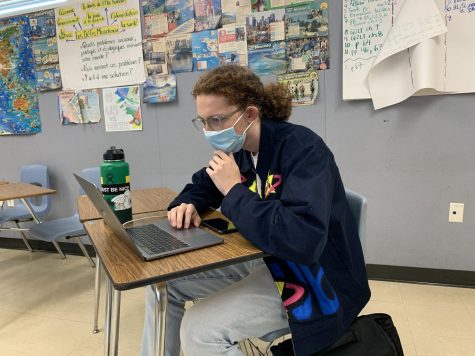
“I have worked in school districts since the year 2007, and if you include the work [experience] I [earned] at [the University of California, San Diego,] that would add another three and a half years. So, I feel like I do not [have] a typical experience,” Aguirre said. “Because of that, I do have a different perspective to add that would really support the work of our district.”
For Segura, Aguirre fulfilled his duties as interim superintendent. Segura stated that Aguirre has “done a lot” for the district over the past year, including maintaining consistent communication and sharing feedback with Board members. According to Taketa’s article, Segura even commended Aguirre for mending the district’s relationship with outside parties. Not only that, Segura explained that Aguirre has done well in negotiating with labor groups, as well as guiding the district through reopening and budget planning during his time as interim superintendent.
“What’s important to me [when looking for desirable qualities in a superintendent] is somebody that remains calm under pressure. That’s key,” Segura said. “It can’t be somebody who blows up; that doesn’t work. [A superintendent must be] someone who can communicate with everybody [and] believes in the team concept. [A superintendent is] someone who believes that it’s all about the students—that’s what I want to hear out of somebody who’s being interviewed.”
With an official title as superintendent, Aguirre aims to put the planning in place to ensure that students and staff can return in a safe manner to schools for the 2021-2022 school year. He believes that it is important to put services and supports in place as students return to in-person learning.
“I find [the students’] resilience [and their] ability to overcome what is likely to be a once-in-a-lifetime experience amazing,” Aguirre noted. “[This] generation [of students] is going to be unique in history and I find the growth and maturity they have demonstrated inspiring.”
The President of the Board
2014—Nicholas Segura raised his right hand and pledged himself to the Sweetwater Union High School District (SUHSD) community as Vice President of the Board of Trustees. Again, in 2016, Segura pledged himself not only to District Four’s community but to SUHSD’s students, staff and administration as President of the Board.
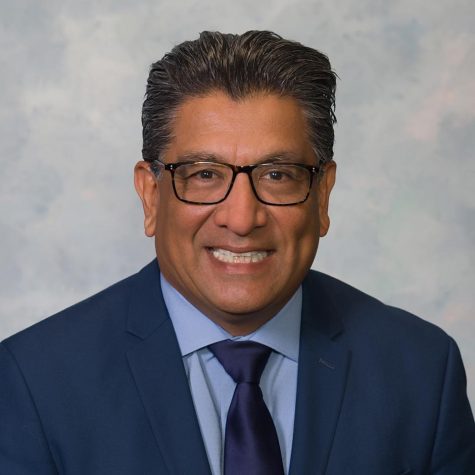
Then—for the last time—on Dec. 14, 2020, during a SUHSD Board of Trustees Regular Meeting, Segura raised his right hand and said the words that confirmed his re-entry as President of the Board for the district: “I, Nicholas Segura, do solemnly swear that I will support and defend a constitution of the United States and the Constitution of the State of California against all enemies, foreign and domestic. That I will bear true faith and allegiance to the Constitution of the United States and the Constitution of the State of California, and I take this obligation freely without any mental reservation or purpose of evasion and I will faithfully discharge the duties of which I’m about to enter.”
For Segura, his children, Karina Aguirre, Nicholas Aguirre III and Aurora Aguirre, were the motivation that pushed him to run for a spot on the Board. K. Aguirre and N. Aguirre III are both alumni from SUHSD, and A. Aguirre is currently a senior at Castle Park High (CPH).
“My daughter—she has support [and] she got straight A’s because she works hard. I asked her, ‘Do you want to go back to [CPH] for the last couple [of] months?’ And she [said], ‘Why? I’ve already got it figured out.’ She actually likes the freedom of learning and studying on her own,” Segura said. “For me, it would have been different because I know I can’t [work] like some people. Everybody learns differently—differentiated instruction they call it, and that’s me.”
On top of keeping up with District Four Trustee responsibilities, according to Gamut Online—an online source for SUHSD policies and district responsibilities—being President of the Board requires Segura and his fellow Board members to appoint a superintendent for the district and ensure that they possess the skills and attributes that best meet the needs of the district. This leaves a big responsibility on Segura’s shoulders that not only affects the entire district but also Bonita Vista High’s own campus.
“That is the most important task that you have as a board member is selecting your superintendent. It’s very critical, and it takes a lot of time,” Segura said. “[Being a Board member is] a very big job, and it’s one that we [the Board] don’t take lightly. We put a lot of time and work and research into that [choosing a superintendent] as well.”
Before he was President of the Board, even Vice President of the Board, Segura served in the U.S. Navy. After, he served as an electrician for Fuller Electric Corporation where he worked for 19 years. Segura’s experience as an electrical worker has allowed him to mentor apprentices, “guiding them into successful professional careers in the electrical industry.” For another 15 years, Segura worked on big electrical jobs where he developed leadership skills from his days at the International Brotherhood of Electrical Workers 569 (IBEW 569) where he represented over 3,000 electricians in San Diego and Imperial Counties as Principal Officer of the Union.
“[Being a union electrician is] totally different from working in a public school district. So it’s very interesting,” Segura said. “In open session [meetings], people can just say what they want to say and you can’t say anything back—just sit there and smile, take notes and move on. If you were to let all that bother you then it’s not a job you would want to do.”
In the 2016 General Election, Segura led a resolution in support of a two to four-year limit for Board members to serve in office, which ultimately was passed by an 80 percent-majority vote. Nowadays, Segura is working towards making ethnic studies a course requirement at schools in the SUHSD. According to Segura, studies have affirmed that ethnic studies or a study of the social, political, economic and historical perspective of different race and ethnic groups “helps foster” a cross-cultural understanding among all students.
“You can’t focus on too [many goals] because there are only so many things you can get done. But if I can get more of that done, if I can get the ethnic studies part in there, my 10 years here were successful,” Segura said.
Currently, Segura’s goals for this term are to work towards bringing the Fiscal Crisis and Management Assistance Team and Securities and Exchange Commission investigation to a close. He aims to continue supporting alternative pathways to career technical education whether it be construction or other industries that want to partner with the school district.
“Because I was from the electrical industry, I was trying to expose more of the district students to professional careers in the electric, construction industry and apprenticeships. So [I am] just trying to put that out there and show [students], ‘Hey, this is an option too. You can go through an apprenticeship,’” Segura said. “A five-year apprenticeship doesn’t cost you any money. That’s all taken care of by the apprenticeship school. Five years later, you’re making over 40 dollars an hour with no debt. So there’s a lot of good things in there.”
Segura’s current and final term ends on Dec. 13, 2024. Newly retired from his career as an IBEW 569 electrician, as of this moment, Segura is “not quite certain” on what he will be pursuing after his term is up.
“We [Board members] don’t do it for this all for the money. You do it because you want to serve your community. It’s important for your community to believe in what you’re doing and hold you accountable for your votes,” Segura said. “It’s important that the community sees [Board members] at the meetings, taking them seriously [and] fighting for their schools. If they want you back, then they vote you in.”
Finance
For most of the 2020-2021 school year, students, teachers and staff have been cooped up inside their homes interacting with others through a computer screen and learning from a distance. This left many feeling restless to get back into the classroom.
After California Governor Gavin Newsom offered school districts additional state funding to reopen classrooms for at least one full grade level, Sweetwater Union High School District (SUHSD) jumped at the opportunity. SUHSD reopened schools on April 12th and is eligible for 12.7 million dollars of state funding.
“The state said [that] for every day [schools are] not back [in-person], [they] lose one percent of the funding. There’s a lack of clarity because we’re on spring break on April 1. I believe we’re [that] going to be eligible for most of it [funding], but it still [needs] to be verified,” Interim Superintendent Moises Aguirre said.
Prior to the 2020-2021 school year, SUHSD was in a deficit of 26 million dollars, according to Aguirre. However, due to federal funding from the Coronavirus Aid, Relief, and Economic Security (CARES) Act and the state funding from Newsom to reopen schools, SUHSD has improved its budget position and upgraded its certification from a negative to qualified certification, Aguirre stated.
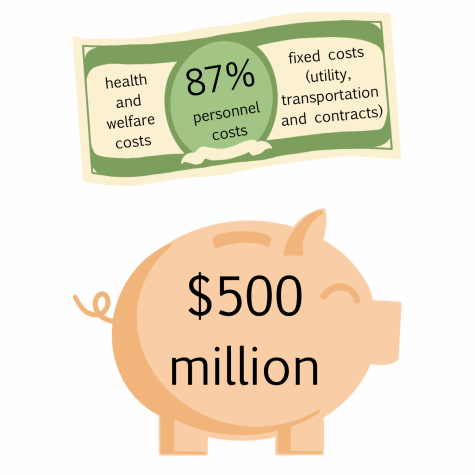
“We keep improving. The next step would be a positive certification, but we’ve stabilized our budget. That’s how I would characterize it,” Aguirre said.
By June 1st, SUHSD board members will need to decide how they are going to spend their money from different funds that total to about 27 million dollars for next year, according to Chief Financial Officer (CFO) Jenny Salkeld. Salkeld, alongside the Director of Fiscal Services Nancy Picone, oversees the district’s budget of 500 million dollars and are responsible for developing the budget.
“[Our responsibilities are] pretty diverse [and] it’s not just the accounting and finance part of it. Those day-to-day operations really are the backbone of us, supporting the school sites and our departments,” Salkeld said.
Salkeld mentioned that the district’s budget is tied to the state and its allocation per student. She explained that through the enrollment numbers and students’ daily attendance, she is able to make contractual considerations. Unduplicated student percentages, which are the students that qualify for free and reduced lunch, homeless and foster youth, also have an impact on the budget.
“Those are the building blocks. We work with [each school’s] principal [and] we look at those different components, tying it to the state, tying that to our contracts [and] tying it to the resources available. That’s where Picone’s team worked closely with the principal and the school secretaries to kind of put that all together,” Salkeld said.
Picone said that the decisions made about the district’s budget are a collaborative process that involves discussion with the finance team, school site, superintendent and assistant superintendents. In addition, she has conversations with each budget analyst from each school within the SUHSD.
“Salkeld likes to call them the three-legged stool, where we have a budget analyst, an accountant and an accounting tech, and the three of them support each of the different school sites,” Picone said. “They’ll have about half a dozen to eight schools to support and budgets to analyze. They’ll talk to the staff, the principals and the secretaries to get their input.”
Salkeld added that the Board listens to their constituents’ opinions and considers where they envision the money to be distributed in certain areas. In addition, she stated that some of their funding sources require the district to listen to the voices of parent groups. As a result, parents are able to provide ideas on where they would like to see the money invested.
“We do this very collaboratively. We’re not here just telling everybody that’s how much you get. We involve everyone,” Picone said.
SUHSD student representative Desiree Adamos attends board meetings and has the opportunity to provide student perspectives regarding the decisions made about the budget. Additionally, Salkeld mentioned that part of the Local Control Accountability Plan (LCAP) work is sending out surveys to students, parents and faculty to gather feedback.
“The student piece is key. Having your representative sit at the board really gives you all an opportunity to share your perspectives,” Salkeld said.
Picone mentioned that the district also gives the school sites a discretionary amount of money where each school has the ability to decide where the money is allocated. Bonita Vista High (BVH) Principal Roman Del Rosario, Ed.D. specified that for BVH, the discretionary money provided to each school is used towards funding credit recovery, tutoring, parent support and the purchase of technology beyond what the district provides.
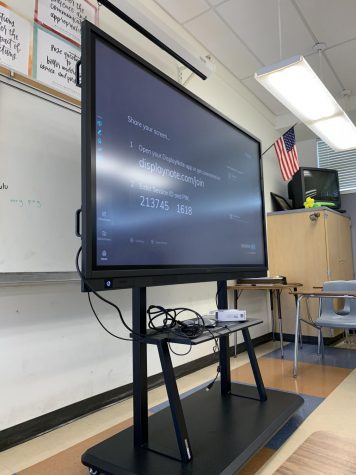
For instance, the BVH administration purchased 75-inch interactive flat screens in every classroom which was a decision made at the sight level. BVH’s money is also used towards giving teachers a higher pay rate for those offering students in-person support after school or on Saturday as well as investments in Personal Protective Equipment (PPE).
“At the [district] level and at the school site level, there are really a lot of important decisions that we have influence over on how we spend our money,” Del Rosario said.
There are various sectors within the district’s budget, many of which go to providing educational services to students within the community. According to Salkeld, about 87 percent of the budget is personnel costs which are contracted salaries with staff members, teachers, counselors, classified staff and office staff. Under that, Salkeld added that there are benefit costs, health and welfare benefits provided for school and district staff. There are also some fixed costs such as utility, transportation and contracts such as Infinite Campus.
Both Aguirre and Salkeld said that the state funding for in-person learning is planned on being spent on in-person instruction and social-emotional support. They also mentioned that the Board is looking at a summer school program and virtual tutoring.
“We [want] to help support the work for students [and] the intent was to address learning loss and help them move forward with that transition of coming back on campus,” Salkeld said.
Part of that support for students was offering teachers an incentive to come back to the classrooms in April so students are able to return to in-person learning. SUHSD is one of the only districts to offer their teachers an incentive to return to campus in April as all teachers in the district will have to come back in May. This was part of the money spent from the state funding for reopening schools according to Aguirre. Aguirre expressed that it was one of the district’s approaches to supporting students who wanted to come back and fell under certain categories that qualified them to be a part of the 10 percent of students back.
“Looking back, other parts of the district and the county were not hit as hard [by the COVID-19 pandemic] as we were down in the South Bay. So that was part of our thinking and [our] overall approach to bringing students back; we looked at the totality of the situation,” Aguirre said.
The district’s efforts also aim to help mediate learning loss from distance learning. In the case of BVH, Del Rosario mentioned that the BVH administration addresses learning loss by getting teachers to work after school or on Saturdays to provide support to students. He added that teachers are being paid for the hours they put in outside of school to help students.
“Students are going through a lot of trauma [and] the roller coaster ride of being in a pandemic. Everyone benefits from a little extra coaching [and] support. If your teacher were to say, ‘Just make up this assignment, it’s gonna bump your grade up. Just come into my classroom after school, I’ll help you out if you get stuck,’ that can make a world of a difference,” Del Rosario said.
Del Rosario recognizes the challenge of pandemic fatigue that affects teachers. However, Del Rosario sees the importance of pushing through and finishing the year strong despite the collective exhaustion among everyone.
“We don’t want to close the door on students and have this pandemic be this place along their trajectory that has this negative impact for the next 50 years,” Del Rosario said. “We want to keep doors open for students. So that’s the goal to end the year strong and really focus on keeping great students engaged, their grades up and organizing ourselves to come back next school year 100 percent in-person.”
Policies and Procedures
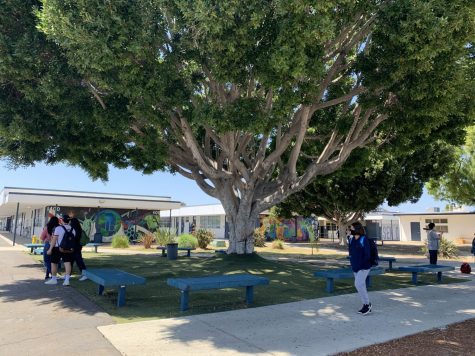
Running a school district is no easy feat. The superintendent plays their role by leading the district and serving their community, while the president of the Board of Trustees appoints the district’s superintendent and performs essential functions in support of student learning; everyone has a designated role to play. However, the one thing that nearly everyone must collaborate on is when district members pass a policy.
“I’m fortunate because Moises Aguirre [Superintendent of the SUHSD, Ed.D.,] feels it’s important to have [a] perspective from the site. I’m one of three current principals that participate in his cabinet meetings,” Bonita Vista High (BVH) Principal Roman Del Rosario, Ed.D., said.
Since March 13, 2020, students have been forced to adapt to distance learning due to the COVID-19 pandemic. Now, with vaccinations being offered at select campuses across the Sweetwater Union High School District (SUHSD), a promising return to in-person learning has presented itself. On March 1, 2021, California Governor Gavin Newsom gave the green light for 10 percent of students to return to campus. However, as COVID-19 cases decreased and additional resources were allocated to San Diego County, the percentage of students allowed to return to campus increased.
“The challenge of [passing a policy] is that sometimes, we look to [the] guidance issued by the state and then they’ll change it up on us, and then we have to go back and adjust and try to figure it out. Overall, I think that’s the reason we adopt those metrics so there could be that understanding about when we would return and all that,” Aguirre said.
One of the recent policies that the SUHSD passed is the 10 percent policy where 10 percent of students who attend a school within the district were given the opportunity to return to on-campus learning. According to Del Rosario, BVH has nearly 34 percent of students back on campus—17 percent are allowed Mondays and Tuesdays, and the other 17 percent are allowed Wednesdays and Thursdays. In order to pass this policy, Aguirre and the district board members went through an extensive process for students to be able to return to campus.
“[The 10 percent policy is] an example of how the [BVH administration] takes the existing guidelines and really tries to maximize the support that we could give to students,” Del Rosario said.
According to Aguirre, Governor Newsom came out with a legislature called the Assembly Bill 86 (AB 86) that required certain requirements from each school that allowed them to become eligible for state funding. Under AB 86, in order to reopen, schools must be open to serving certain categories of students identified by that bill which include: students with Individualized Educational Plan (IEP), students who are English learners, students who qualify for free or reduced lunch, students who have issues of connectivity for internet and students who are at risk of abuse. In addition, part of the agreement was to maintain social distancing guidelines.
“We [district members] were very proactive [and] worked very collaboratively. We worked with our starting cabinet, and then it layers out and has concentric circles of feedback. We met with our teachers, and they said, ‘Have you thought about air filters?’” Aguirre said. “There’s a lot of processes to go through to make the plan stronger.”
Similarly, graduation plans were announced by Del Rosario, who sent out an email on May 13, 2021. According to an article from the Crusader, “Celebrating the last four years—BVH plans to hold in-person graduation ceremonies for seniors,” one of the policies for in-person graduation requires wearing masks. On top of that, “each graduating senior is allowed to bring four guests from their household who will all sign a district waiver beforehand.”
On Dec. 14, 2020, the Board of Trustees approved a policy that added another grading option for teachers to utilize; the purpose of the new option is to address the needs of students during the pandemic. The “No Credit due to Pandemic” (NCP) policy has been implemented in schools across the SUHSD.
“Our teachers know that if a student—and I really asked the teachers to focus on D, F and NCP students—needs extra help, they’re able to offer in-person support after school or Saturday at a higher pay rate,” Del Rosario said.
To Aguirre, when it comes to creating policies, it’s a “check and balance” process where staff members oftentimes draft the basis of a policy. Then, depending on whether the policy has to go through the Department of Student Services and Facilities, the policy goes under a review process. Since the Board is the body that’s vested by law with the authority to adopt policies, the policy is then presented to the Board who asks related questions and learns more about the policy. After lawyers are brought in to check over the legalities of the policy and once the policy is ready to be re-presented to the Board, that is when the policy is approved.
Del Rosario is among the people who are a part of the decision-making for policies as he is one of the three principals who are members of the cabinet. Del Rosario mentions that through this position, he is able to weigh in on many important decisions and represent how other school principals in the district feel.
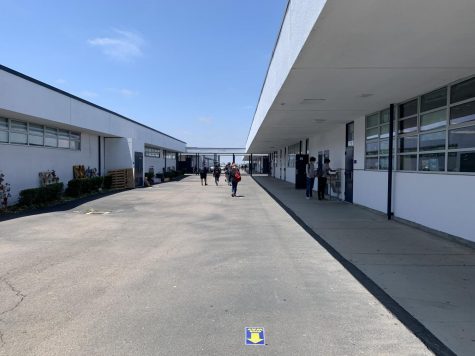
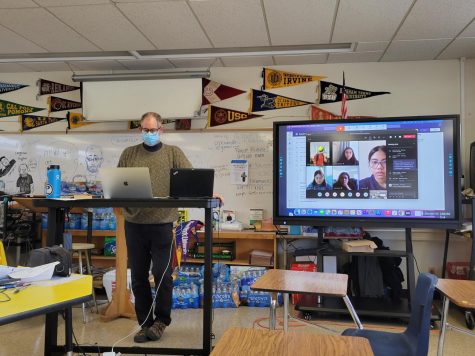
“When the superintendent and the cabinet are shaping the guidelines on every decision that we’re implementing, as a district, I have that seat at the table. I could represent both the interests of Bonita and of my fellow principals, and try to shape how those guidelines end up at the school site,” Del Rosario said.
Furthermore, Del Rosario remarked how after the guidelines are set by the district for a policy, it is up to the school site to follow, understand and implement those guidelines into their school site plan. He mentioned how he has the responsibility to establish the policy with the teachers. Specifically, with the 10 percent policy, Del Rosario expressed the BVH administration is trying to get as many students to come back to in-person learning following the guidelines the district put in place.
“At the core of the work that I do at the school site is to be able to use my judgment and to implement them in the most thoughtful, deliberate [and] humane way,” Del Rosario said.
The district also involves students’ voices in the policy-making and passing process. Desiree Adamos is the student board member for SUHSD. Adamos has preferential voting, which means that her vote is not accounted for in the real-making process. However, Adamos explained that she is able to influence the board’s decisions as she has the opportunity to provide student perspectives on policies the district is trying to pass. She also has the ability to collaborate with other students in an effort to speak on their behalf and their experiences. She expressed how students impact a lot of the policies passed.
“You [students] can find that if you lobby enough and you talk to the right people, any vision that you have regarding your education, your school environment [or] anything you want to improve, there is always a solution to the problem that you [are] currently experiencing,” Adamos said. “That can go for anything, like racial equity or mental health or [LGBTQ+] representation. There’s really no boundaries as to what you feel like would improve the quality of life that you have as a student.”
Adamos believes that there should be more student voices in the district. In a poll conducted by the Crusader on May 17, out of 402 students, 53.2 percent of students are not aware of the ways that they can be involved in district decision-making.
“I don’t really think that there [are] enough student voices, not because students are dispassionate or not interested in what’s going on within the district, but because they don’t know what opportunities there are out there for them to get involved or don’t know where to start whenever they have an issue,” Adamos said.
Adamos finds a lot of importance in having student voices in policy decisions that involve them and their educational experience. She believes that it is crucial that board members listen to students because students are the people they are trying to empower. Adamos added that it is the district board members’ responsibility to ensure quality education and having one that can better students as people.
“It’s important for [board members] to listen to the people that they’re supposed to be serving because you can’t really quantify the experiences of students and illustrate what students need without that coming from the mouths of students themselves,” Adamos said.
With policies, administrators like Del Rosario are able to enforce guidelines and regulations at BVH to keep students safe. Overall, Del Rosario, Aguirre and Adamos all emphasized that passing a policy is a “complex” process.
“I really believe in equity. You do have to always be seeking out, ‘Is this unfair that this school is doing [something] this way and this [school] is doing it the other way?’ So it’s always that tug and pull between who gets to make those decisions. But I’m always advocating for policies that bring the decisions closer to the school site, as opposed to the district or county or state,” Del Rosario said.